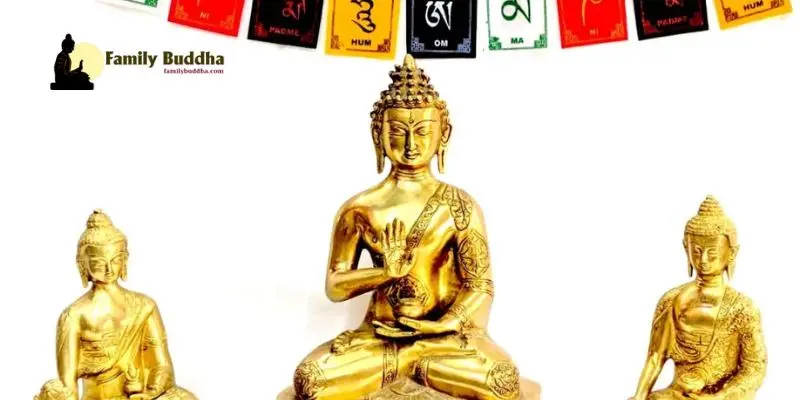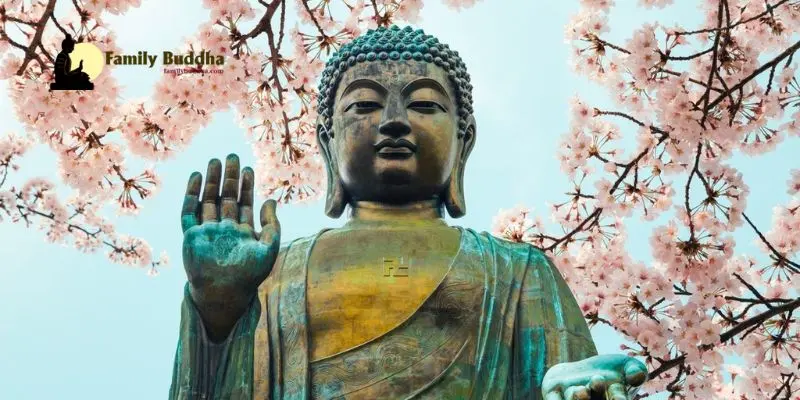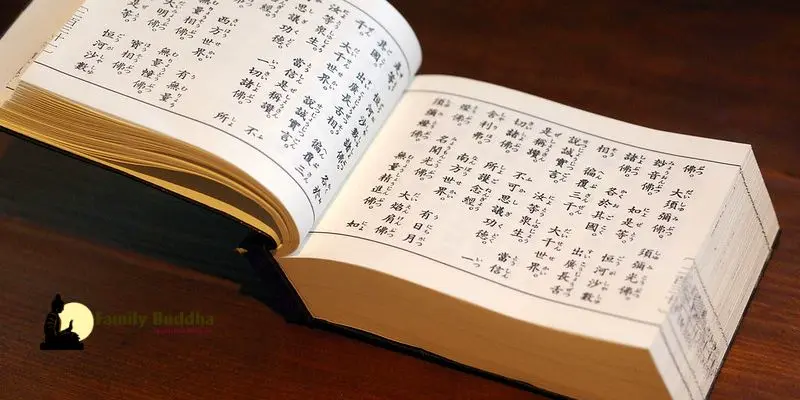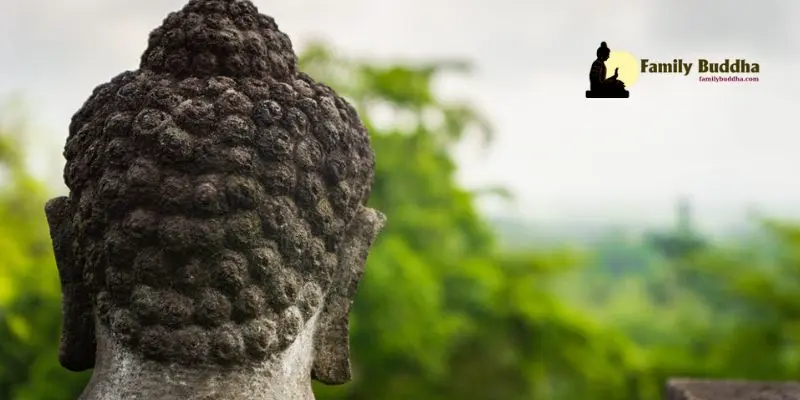In the vast expanse of Buddhism, artifacts hold profound significance, serving as tangible embodiments of the religion’s profound teachings and spiritual essence. These Artifacts of Buddhism have transcended time and cultures, weaving intricate tapestries of symbolism and meaning.
From the serene Buddha sculptures to the mesmerizing prayer wheels, each artifact unfolds a captivating narrative, inviting us to delve deeper into the profound depths of this ancient faith. Let’s discover more at Familybuddha.com.
Buddha Sculptures: Embodiments of Enlightenment

The Dhyana Mudra: Stillness in Meditation
The most iconic representation of Buddha is the seated sculpture, with hands resting in the Dhyana Mudra – the gesture of meditation. This posture symbolizes the profound state of inner peace and tranquility attained through the practice of mindfulness. The gentle folds of the robe, the serene expression, and the composed demeanor evoke a sense of profound stillness, inviting viewers to embrace the path of self-discovery and enlightenment.
The Varada Mudra: Compassion and Generosity
In some Buddha sculptures, the right hand is depicted in the Varada Mudra, with fingers pointing downwards. This gesture represents compassion, generosity, and the bestowing of blessings upon all sentient beings. It reminds us of the boundless kindness that resides within the Buddha’s teachings, encouraging us to cultivate these virtues in our own lives.
The Dharmachakra Mudra: The Wheel of Teachings
The Dharmachakra Mudra is another profound symbolism found in Buddha sculptures. With the thumb and index finger of both hands touching to form a circle, it signifies the turning of the wheel of the Dharma – the teachings of Buddhism. This gesture reminds us of the profound wisdom and truth that the Buddha imparted, a beacon of guidance for those seeking enlightenment.
The Mahaparinirvana: The Final Journey
In some instances, Buddha sculptures depict the Mahaparinirvana pose, with the figure reclining on its side. This posture symbolizes the final moments before the Buddha’s passing into Nirvana, the ultimate state of liberation from the cycle of rebirth. It represents the complete detachment from worldly desires and the attainment of supreme enlightenment, reminding us of the transient nature of existence and the ultimate goal of spiritual freedom.
Prayer Wheels: Spinning Mantras into the Universe
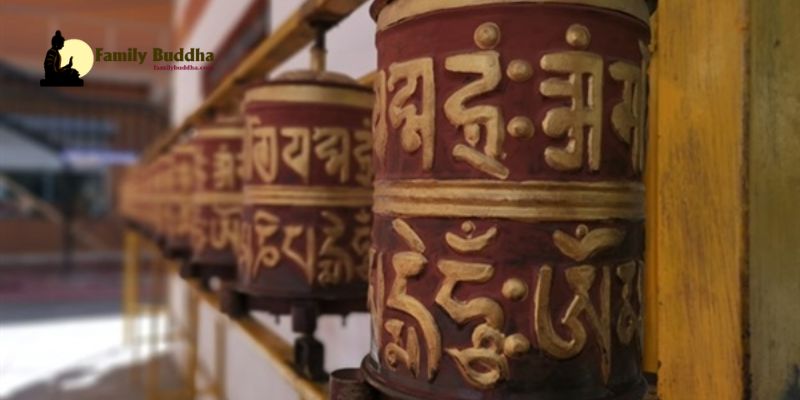
The Mani Prayer Wheel: Portable Devotion
Prayer wheels are one of the most distinctive and captivating artifacts in Buddhism. The Mani prayer wheel, also known as the Tibetan prayer wheel, is a portable device that can be carried or spun by hand. Inscribed with sacred mantras, such as the famous “Om Mani Padme Hum,” these wheels are believed to release blessings and positive energy into the universe with each revolution.
The Monumental Prayer Wheels: Architectural Wonders
In contrast to their handheld counterparts, monumental prayer wheels are architectural marvels that stand as towering structures, some reaching heights of eight feet or more. These colossal wheels are often found in monasteries, temples, and sacred sites, inviting devotees to spin them as a form of meditative practice and spiritual offering.
The Symbolism of Spinning Mantras
The act of spinning a prayer wheel is believed to have profound spiritual significance. Each revolution is thought to release the power of the mantras inscribed within, sending waves of positive energy and blessings into the world. This ancient practice serves as a reminder of the interconnectedness of all beings and the importance of cultivating compassion and mindfulness in our daily lives.
Singing Bowls: Resonating Harmonies of Mindfulness
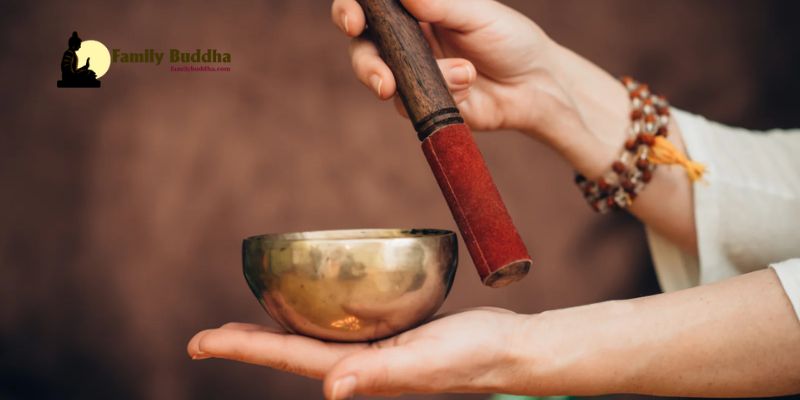
| Bowl Type | Material | Purpose |
| Tibetan Singing Bowls | Typically made of bell metal (a mix of copper and tin) | Used in meditation, healing practices, and religious ceremonies |
| Crystal Singing Bowls | Made of quartz crystal | Believed to have powerful vibrational properties for healing and spiritual purposes |
| Antique Singing Bowls | Crafted from various metals and alloys, often passed down through generations | Highly valued for their unique tones and historical significance |
The Mesmerizing Tones of Mindfulness
Singing bowls are enchanting artifacts that produce captivating tones when struck or rubbed with a mallet. These resonant vibrations are believed to have a profound effect on the mind and body, inducing a state of deep relaxation and inner peace. In Buddhist practices, singing bowls are often used during meditation, chanting, and other spiritual rituals, creating a serene and immersive atmosphere conducive to mindfulness and self-reflection.
Healing Harmonies and Vibrational Therapy
Beyond their spiritual applications, singing bowls are also valued for their potential healing properties. Many believe that the vibrations produced by these bowls can help restore balance and harmony within the body’s energy systems. In some traditions, singing bowls are used in sound therapy sessions, with practitioners carefully selecting bowls and playing specific tones to promote physical, emotional, and mental well-being.
Antique Singing Bowls: Timeless Treasures
Antique singing bowls hold a special place in Buddhist traditions. These bowls, often crafted from unique alloys and passed down through generations, are highly prized for their distinctive tones and historical significance. Each bowl carries with it the stories and energy of those who have used it throughout the centuries, making them treasured artifacts that connect the present with the rich tapestry of Buddhist heritage.
Thangkas: Sacred Scroll Paintings
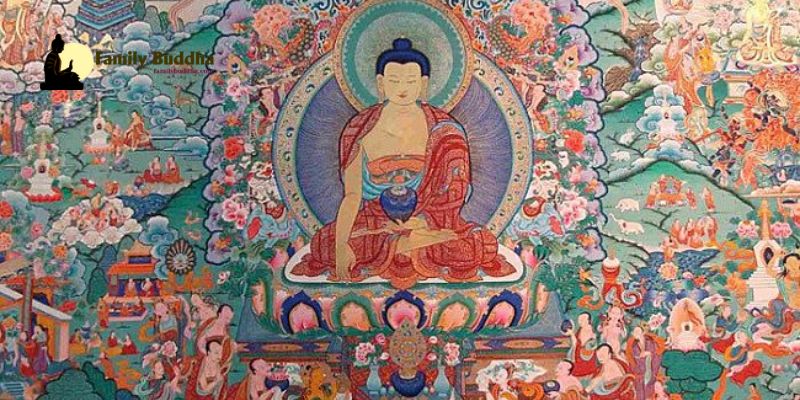
- Thangkas are intricate scroll paintings that depict various Buddhist deities, mandalas, and scenes from the life of the Buddha.
- They serve as visual aids for meditation, devotion, and spiritual instruction.
- The creation of thangkas follows strict traditional methods, with each element meticulously crafted to convey symbolic meaning.
- Thangkas are often used in monasteries and temples as objects of worship and contemplation.
The Art of Symbolic Storytelling
Thangkas are not mere paintings but intricate tapestries of symbolic storytelling. Each brushstroke, color, and figure is carefully crafted to convey profound spiritual teachings and narratives. These scroll paintings depict various Buddhist deities, mandalas, and scenes from the life of the Buddha, serving as visual aids for meditation, devotion, and spiritual instruction.
The Meticulous Craftsmanship of Thangka Creation
The creation of thangkas is a highly revered and sacred process, steeped in tradition and symbolism. Skilled artisans follow strict methods passed down through generations, meticulously crafting each element to convey symbolic meaning. From the preparation of the canvas to the intricate brushwork and the application of precious materials like gold and gemstones, every step is imbued with spiritual significance.
Thangkas in Monasteries and Temples
Thangkas hold a cherished place in Buddhist monasteries and temples, serving as objects of worship and contemplation. These sacred scroll paintings adorn the walls and altars, offering devotees a visual gateway into the realm of Buddhist teachings and iconography. Through their intricate depictions, thangkas inspire spiritual growth, foster contemplation, and serve as powerful reminders of the profound wisdom of the Buddha’s teachings.
Prayer Beads: Mindful Companions on the Spiritual Path
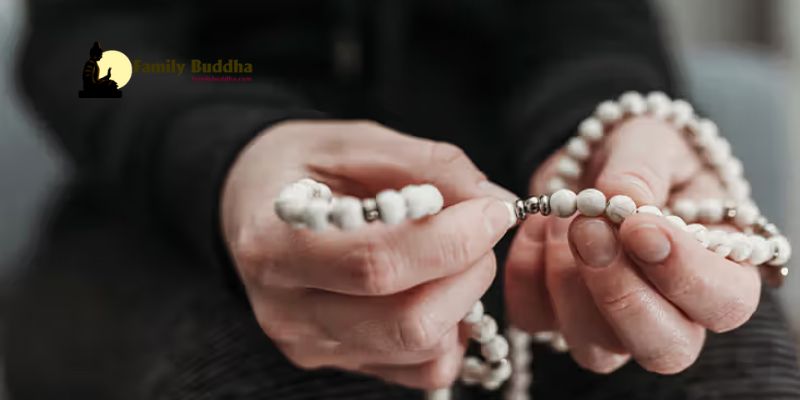
- Prayer beads, also known as malas, are strings of beads used for counting recitations or mantras during meditation and prayer.
- They come in various materials, such as wood, seeds, gemstones, or bodhi seeds, each with its symbolic meaning.
- The number of beads often holds spiritual significance, with popular counts being 108 or 27 beads.
- Prayer beads serve as tactile aids for mindfulness, helping practitioners stay focused during their spiritual practices.
The Meditative Rhythm of Counting Beads
Prayer beads, or malas, are cherished companions on the spiritual journey of Buddhist practitioners. These strings of beads, often made from materials like wood, seeds, gemstones, or bodhi seeds, are used for counting recitations or mantras during meditation and prayer. The rhythmic motion of running one’s fingers along the beads creates a meditative rhythm that helps practitioners stay focused and present in the moment, deepening their connection to the practice.
Symbolism and Significance of Prayer Beads
Each component of prayer beads holds symbolic significance in Buddhist practice. The beads themselves represent the interconnectedness of all beings, reminding practitioners of the unity and oneness that underlies existence. The knots or markers between beads symbolize moments of contemplation and reflection, encouraging mindfulness and awareness during recitations. As practitioners move through each bead, they cultivate a sense of presence and intention in their prayers and meditations.
The Ritual of Using Prayer Beads
The ritual of using prayer beads is a sacred and intentional practice in Buddhism. Before beginning recitations or meditation, practitioners often hold the mala in their left hand and start at the bead next to the guru bead, which represents the student-teacher relationship. With each mantra or recitation, they move to the next bead, turning the beads clockwise with their thumb. When they reach the guru bead again, they may choose to reflect silently or offer gratitude before continuing in the opposite direction. This ritual not only helps in counting but also serves as a mindful and contemplative practice in itself.
Incense Offerings: Fragrant Pathways to the Divine

- Incense has been used for centuries in religious and spiritual practices to purify spaces, calm the mind, and create a conducive atmosphere for meditation.
- Different types of incense, such as sandalwood, cedar, or juniper, carry symbolic meanings and are chosen based on the desired effect.
- The act of offering incense is a form of reverence and devotion, symbolizing the purification of thoughts and intentions.
- The rising smoke of incense is seen as a metaphor for prayers ascending to the heavens, carrying the wishes and aspirations of the faithful.
Purifying Spaces and Minds with Incense
One of the primary purposes of burning incense in Buddhist rituals is to purify the environment and create a sense of sacredness. The fragrant aroma of incense not only cleanses physical spaces but also helps in clearing the mind and focusing attention during meditation. As the incense burns, it releases aromatic compounds that have a calming effect on the nervous system, promoting relaxation and inner peace. In this way, incense becomes a powerful tool for transforming ordinary spaces into sanctuaries for spiritual practice.
Symbolism of Different Incense Types
Various types of incense are used in Buddhist ceremonies, each carrying its symbolic significance. For example, sandalwood incense is associated with purity and clarity of mind, making it ideal for meditation practices. Cedar incense is believed to promote grounding and stability, helping practitioners feel rooted and centered during their spiritual endeavors. Juniper incense is often used for protection and purification, warding off negative energies and creating a shield of positivity around the devotee. By choosing specific types of incense, practitioners can enhance the intended purpose of their rituals and deepen their spiritual experience.
The Sacred Act of Offering Incense
In Buddhist traditions, offering incense is a sacred gesture of reverence and devotion. Before lighting the incense, practitioners may bow respectfully to the altar or shrine as a sign of humility and respect. As the incense burns, they visualize their prayers and aspirations rising with the fragrant smoke, symbolizing the transmission of their intentions to the divine realms.
The act of offering incense is not only an outer display of devotion but also an inner commitment to purifying one’s thoughts and cultivating a heart of compassion and wisdom. Through this simple yet profound ritual, practitioners engage in a tangible expression of their spiritual journey toward enlightenment.
Conclusion
In conclusion, the rich tapestry of Buddhist artifacts and ritual objects serves as a gateway to the profound teachings and practices of the tradition. From prayer wheels that spin mantras of compassion to singing bowls that resonate with healing harmonies, each artifact embodies the essence of mindfulness, devotion, and spiritual transformation.
Thangkas, with their intricate symbolism, and prayer beads, with their tactile reminders of presence, offer practitioners visual and tactile aids for deepening their spiritual practice. Incense offerings, with their fragrant pathways to the divine, create sacred spaces for meditation and contemplation.
As practitioners engage with these artifacts and ritual objects, they not only enrich their spiritual journey but also connect with a lineage of wisdom and practice that spans centuries. The symbolism, craftsmanship, and ritual significance of these objects serve as reminders of the interconnectedness of all beings and the universal truths of impermanence and compassion.
Whether used in monasteries, temples, or personal altars, these artifacts invite practitioners to embody mindfulness, cultivate compassion, and walk the path toward awakening. Through mindful engagement with Buddhist artifacts, practitioners can deepen their spiritual practice and awaken to the boundless potential of the present moment.


